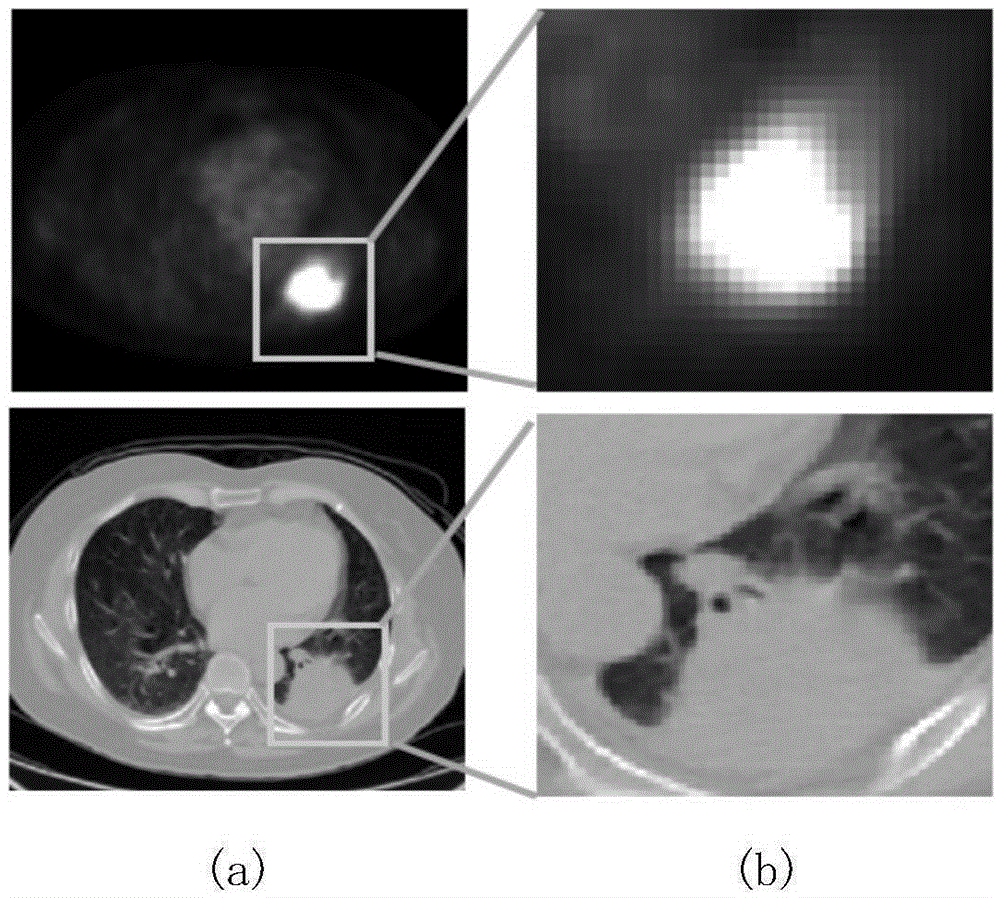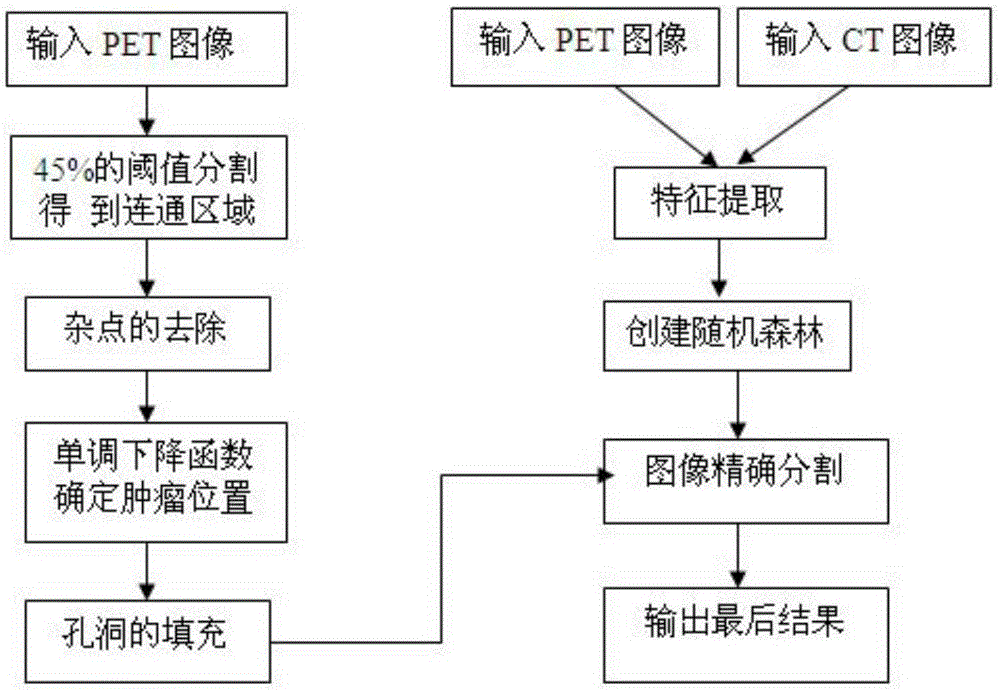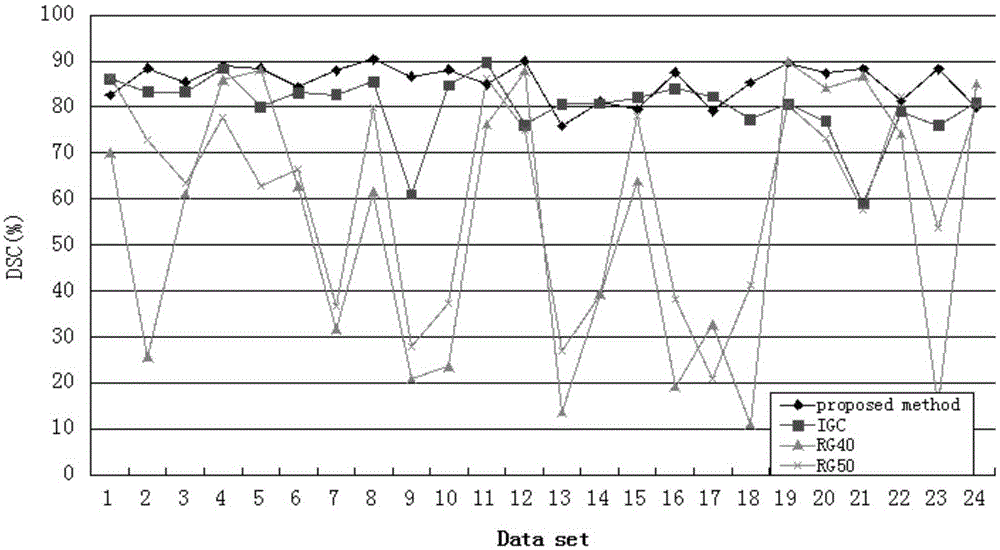Automatic lung tumour segmentation method based on random forest and monotonically decreasing function
A random forest and automatic segmentation technology, which is applied in the field of biomedical image processing, can solve problems such as the inability to provide segmentation results and the inability to realize fully automatic segmentation methods
- Summary
- Abstract
- Description
- Claims
- Application Information
AI Technical Summary
Problems solved by technology
Method used
Image
Examples
Embodiment Construction
[0034] The present invention will be further described below in conjunction with the accompanying drawings.
[0035] like figure 1 As shown, the lung tumor segmentation method of the present invention first collects PET and CT image data, and performs up-sampling on the PET image, and performs affine registration on the PET and CT images, so that the pixels on the PET and CT images are aligned One to one correspondence. The gold standard for obtaining tumors with the help and supervision of a clinical oncologist. Firstly, the location of the tumor is preliminarily determined by the method of threshold segmentation and the monotonous decline (Downhill) function, then feature extraction is performed on the PET and CT images, and finally the random forest (Randomforest) algorithm is used to integrate and analyze the information on the extracted PET and CT images , test and segment the lung tumor area, and obtain the final detection result.
[0036] Under the sponsorship of the...
PUM
 Login to View More
Login to View More Abstract
Description
Claims
Application Information
 Login to View More
Login to View More - R&D
- Intellectual Property
- Life Sciences
- Materials
- Tech Scout
- Unparalleled Data Quality
- Higher Quality Content
- 60% Fewer Hallucinations
Browse by: Latest US Patents, China's latest patents, Technical Efficacy Thesaurus, Application Domain, Technology Topic, Popular Technical Reports.
© 2025 PatSnap. All rights reserved.Legal|Privacy policy|Modern Slavery Act Transparency Statement|Sitemap|About US| Contact US: help@patsnap.com



